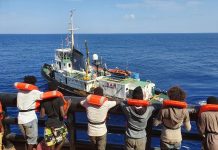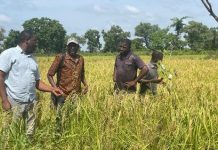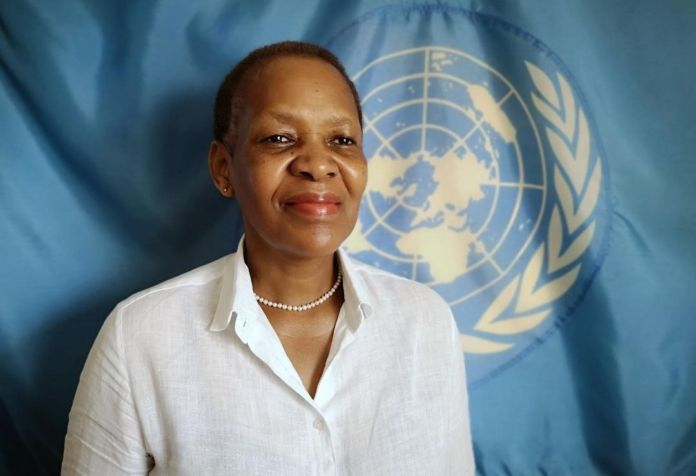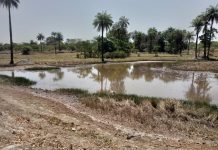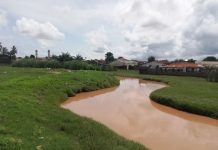With Madiba Singhateh
Welcome to another edition of the Environment Column. In this week’s Column, we will bring you an interview that this Columnist had earlier with the country Representative of F.A.O. Moshibudi Rampedi, on matters related to the fishery sector and sustainable fisheries such as aquaculture or fish farming, in the country. Follow the rest of the interview.
Q. FAO was established in 1978 in the Gambia. Since then the organization has implemented more than 120 projects in the country. What are the success stories of some of these projects by the FAO in the Gambia?
A. Considering that the United Nations Food and Agriculture Organization (FAO) has worked in The Gambia for the past four decades in supporting Government efforts and goals in securing food and nutrition security, as well as providing technical and expert assistance in agriculture, forestry and fisheries sectors, there are quite a number of efforts I can highlight as success stories; noting that you are interested in our work which relates to the Fisheries and Aquaculture sector. We took part in the official launch of the Ministry of Fisheries, Water Resources and National Assembly Matters’ new website and Fisheries Information System (FIS) that FAO funded through the Technical Cooperation Program Facility. We supported the development of these platforms upon request from the Government. They will allow all stakeholders in the Fisheries and Aquaculture Sector to easily access transparent and relevant information and resources on fisheries management.
This will include amongst others, statistics, maps, literature, licenses and registration information, policy papers and legislation. It will ensure that the Ministry’s capacity to fulfill all its objectives is enhanced.
Furthermore, this positive development will subsequently contribute to the sustainable development of World Fisheries as required by the United Nations Sustainable Development Goals (SDGs), especially SDG 14 which falls under Life Under Water.
Another project we are proud of is the training of 34 women and 6 men in improved fish-smoking techniques that is less harmful for their health. FAO has also supported the construction of Tilapia and Catfish hatcheries, and the building and equipment of two Fish Feed Mill houses. The Fish Feed Mill houses are crucial to meet the needs of fish farmers involved in aquaculture.
Q. Fisheries is one of the major sources of food, employment and income in the Gambia. It is therefore important to utilize the resources in a sustainable way. What is your view on the Fisheries Sector and how is FAO collaborating with the Department of Fisheries towards the development of the sector?
A. In the Gambia, Fisheries is one of the major sources of food, employment and income. It is therefore important to ensure its sustainable management and utilization with a view to enhance the subsector’s contribution to nutritional, economic and social wellbeing of the country’s growing population. To this end, FAO works closely with the Department of Fisheries by providing technical support and guidance in the management of the country’s fish resources.
Fish plays an important role in fighting hunger and nutrition. Not only is it a source of protein and healthy fats, it is also a unique source of essential nutrients including long-chain fatty acids, iodine, vitamins, minerals and calcium.
FAO plays a leading role in the management and implementation of the international fisheries policy, through the Committee on Fisheries (COFI) and related sub-committees on Fish Trade and Aquaculture. FAO’s close ties with a wide range of partners that include Government, Regional Fisheries Bodies, Cooperatives and fishing communities that is crucial for the development of the sector. In relation to the tools we have at our disposal to collaborate with and support the Department of Fisheries to ensure a sustainable use of the resources, there are four that I can highlight. This include the implementation of the Code of Conduct for Responsible Fisheries and the Ecosystem Approach to Fisheries (EAF); the compiling and publishing of the Global Capture Production Database including fleet, fishers and trade-related data by using technological and community-based management solutions as well as implementing the Port and Flag State Agreements (PSMA) that helps reduce the negative impacts of fishing on the environment, as well as prevent, deter and eliminate Illegal, Unreported and Unregulated Fishing (IUUF) amongst others.
As part of support and collaboration with the Fisheries Sector, FAO conducted a comprehensive review of the Fisheries and Aquaculture Sector in 2017, and supported the formulation of a new strategy for the years 2017 to 2021. Other normative studies were conducted and these include the mapping of potential aquaculture sites and identifying the best fish spawning sites in the country.
Although there are improvements in the Fisheries Sector, we still have to address some challenges in aquaculture such as the lack of good quality fish seed (fingerlings) as well as skills and technological expertise among farmers and public sector officials. FAO has provided human resources support in the form of technical know-how, fish handling and processing techniques and managerial skills to fish farmers and government officials.
To address the fish seed challenges, FAO is assisting the Ministry of Fisheries, Water Resources and National Assembly Matters by ensuring provision and access to good quality feed and fingerlings; for example, with the rehabilitation and establishment of tilapia and catfish hatcheries in the Jahally Aquaculture Centre. The hatcheries and feed mills will have a significant impact on the development of aquaculture and will contribute to reduce poverty.
Q. Can you briefly tell us about the 2017-2021 Fisheries and Aqua-culture Strategic Development?
The strategy was developed to serve as a guide to the Government, private sector, civil society and development partners in the decision-making process for policies as well as their investment choices while at the same time, promote the sustainable management and utilization of fish resources.
The impact of the Strategy will be best addressed by the Department of Fisheries.
Q. What is FAO doing to assist Government towards achieving sustainable fisheries since the demand for fishmeal and fish oil is increasing (FMFO)?
FAO is promoting the “Blue Growth Initiative” as a coherent approach to foster sustainable, integrated and socio-economic sensitive management of Oceans and wetlands, focusing on captured fisheries, aquaculture and ecosystem services, trade and social protection of coastal communities. It is particularly relevant to understanding the needs and interests of women, youth and migrant groups while at the same time promote responsible and sustainable fisheries and aquaculture in an inclusive and participatory way that engages all stakeholders. This is particularly true for women who play key roles in fisheries and aquaculture throughout the entire seafood value chain. Unfortunately, around the world and in the Gambia, women face discrimination in rights to access land or fishing grounds or have limited access to resources, including credit, technology and training. This explains why Blue Growth prioritizes the inclusion of these groups.
Q. FAO meets every year to evaluate the stock level of fish species. What are the species that are fully exploited and what are the ones that are not?
According to FAO’s ‘State of the World Fisheries and Aquaculture Rreport 2018 (SOFIA)’, linking the catch pattern with stock status is not straightforward. In general, an increasing trend in catch usually suggests an improving stock status or an expansion in fishing intensity, whereas a decreasing trend is more likely to be associated with declines in abundance or with management measures that are either precautionary or aimed at rebuilding stocks.
However, many other factors contribute to decreasing catch such as environmental changes and market conditions. SOFIA 2018 highlighted that the status and trend in the Eastern Central Atlantic fishing area, has seen an overall increase in catches but with fluctuations since the mid-1970s. This has reached 4.3 million tons in 2015. Sardine (Sardina pilchardus) is the single most important species. The reported catches of this species are close to 1 million tons per year in the period from 2004 to 2015. A recent assessment indicates that sardine stocks have been under fished. Another important small species are pelagic fish that are fattier in oil content (Omega 3) and found near the ocean surface or in middle depths, such as the sardinella (Sardinella aurita). These species represent the basis for many fisheries across the region, both small-scale and industrial.
According to the data we have, catches for these species in 2015 amounted to 200 000 tons and what we have seen in the last five years is that average catches have declined. Some of the stocks of these species are overfished. The fish species that live closer to the sea floor are largely fully sustainably fished in most areas. Overall, 57 percent of the stocks assessed are within biologically sustainable levels in the Eastern Central Atlantic.
Q. What is FAO’s stance on catching fish to feed farms such as fish farms? Is this practice sustainable?
Interaction of aquaculture activities with other economic sectors and natural resources users requires a responsible and integrated approach to aquaculture development as expressed in Article 9 of the Code of Conduct for Responsible Fisheries.
In response to the explicit request of Member Countries to improve the management and enhance the socio-economic impacts of aquaculture in 2006, FAO initiated the development of an Ecosystem Approach to Aquaculture (EAA). Guidelines for EAA became available in 2010 to improve this management and enhance the socio-economic impact of aquaculture.
With people consuming more fish than ever, the Code of Conduct for Responsible Fisheries (CCRF) is increasingly relevant as the guiding framework for implementing the principles of sustainable development of fisheries and aquaculture. New initiatives employed to advance the implementation of CCRF include efforts to move towards SDG compliant investments, integrated networks for reducing IUU fishing and the management of the risks of food production from aquaculture.
Q. FAO is promoting artisanal fishermen in fish processing and fish handling. Do you think industrial fishing is not taking away the jobs of local fishermen and fish mongers?
Recognizing small-scale fisheries as a fundamental contributor to poverty alleviation and food security, FAO supports the development of the sector, through development of a dedicated instrument, the Voluntary Guidelines for Small Scale Fisheries (SFF) in the Context of Food Security and Poverty Eradication. The SSF Guidelines are for all actors striving to secure sustainable small-scale fisheries, to end hunger and poverty and strengthen human rights. They are tools that guide dialogue, policy processes and action at all levels, from local communities to the global level.
The Department of Fisheries may assist in responding to your interest in whether industrial fishing is not taking away the jobs of local fishermen and fish mongers.
Q. Irregular and Unreported Unregulated (IUU) fishing is global problems, how is FAO working with governments to combat the issue?
At FAO, it has been important for us to make sure that fishermen and women, fish traders, fish processors are trained in combatting Illegal Unreported Unregulated Fishing (IUUF).
IUUF is a very serious matter for FAO, as it remains one of the greatest threats to marine ecosystems. In addition, it strongly undermines national and regional efforts to manage fisheries in a sustainable manner as well as the endeavours to conserve marine biodiversity.
We have the means to end illegal fishing, thanks to the Port State Measures Agreement (PSMA) and other international tools. PSMA curtails IUU fishing by improving port inspections of foreign fishing vessels conducting illegal fishing activities. It is the first binding international agreement that targets IUU fishing. Almost all fish caught by foreign vessels come through a port on their way to markets. It is implemented through port controls. When done correctly, it can be very efficient in combating illegal fishing activities.
The agreement helps regulate the fishing boats coming through every port, enhances regional and international cooperation and blocks the flow of IUU-caught fish into national and international markets.
Q. Currently, the Ministry of Fisheries in Partnership with FAO and EAF-Nansen Programme is conducting acoustic survey in the waters to determine the stock level/Biomass of the pelagic resources.
FAO in partnership with the Norwegian Agency for Development Cooperation (NORAD) and the Institute of Marine Research (IMR) of Bergen, is working on the implementation of the EAF-Nansen Programme. The Programme’s long term objective is to ensure that ‘Sustainable fisheries improve food and nutrition security for people in partner countries’.
For more than 40 years, the EAF-Nansen Programme supported coastal developing countries to assess and manage their fisheries for sustainable use of their oceans.
The information and data collected through the Nansen Programme, in particular through surveys with the research vessels is used to produce reports on the state of the fishery resources. Over the years, the goals and objectives of the programme have evolved to better respond to emerging global challenges and the needs of recipient countries. If we focus on what has happened in 2019 in our region, FAO confirms that the research vessels studied the continental shelf and upper slope of West Africa from South Africa to Morocco.
The data collected provides an overview of distribution and abundance of resources across the region. In addition to determining distribution and abundance of demersal species and communities, and collecting biological samples; sampling is carried out to determine oceanographic conditions, including physical, chemical and biological attributes.
Furthermore, the survey records matter of concern towards oceans’ pollution such as the recording of micro plastics and the occurrence of marine debris in the waters.
Q. What is FAO doing to determine whether or not additional fishmeal plants can be opened?
The need for the establishment and opening of additional fishmeal plants will be based on the guidance that the Ministry of Fisheries, Water Resources and National Assembly Matters provides.
Q. How are you going to narrow down individual species using acoustic monitoring? Also if they are migratory species that go up and down the West African coast how are you going to account for species that may not currently be in the waters? What are the challenges in the Fisheries Sector and what do you think is the possible solution?
Employing acoustic species monitoring to track migratory species along the West African Coast is done through among other means the EAF-Nansen Program.
Regarding challenges, she said the Government of The Gambia places priority on the development of fisheries and aquaculture, by providing the enabling environment for the active involvement of players including the private sector, in its development. However, there are various constraints confronting the development of the sector including the need to address technical, financial, managerial and institutional capacity.
Possible solutions may include recognizing the important role of small-scale fisheries for human well-being and sustainable development because of their contribution to food and nutrition security and the opportunity they represent for poverty eradication.
Fishing communities ought to be involved in decision-making processes that influence their lives and future. Where poverty exists in small-scale fishing communities, it may be multidimensional in nature and not only caused by dwindling fishery resources and low incomes but also by factors that impede full enjoyment of human rights, including civil, political, economic, social and cultural rights. The often-complex livelihood strategies of fishing communities may address resource management from a broader social and economic development perspective.
To address this situation, the FAOs’ Voluntary Guidelines for Securing Sustainable Small-Scale Fisheries in the Context of Food Security and Poverty Eradication (SSF Guidelines) were developed by Member States. This guideline was endorsed by the 31st Session of the FAO Committee on Fisheries in 2014. The SSF Guidelines are unique; they represent the first international instrument dedicated entirely to small-scale fisheries; they present an opportunity for addressing fisheries challenges and opportunities in the Gambia.

